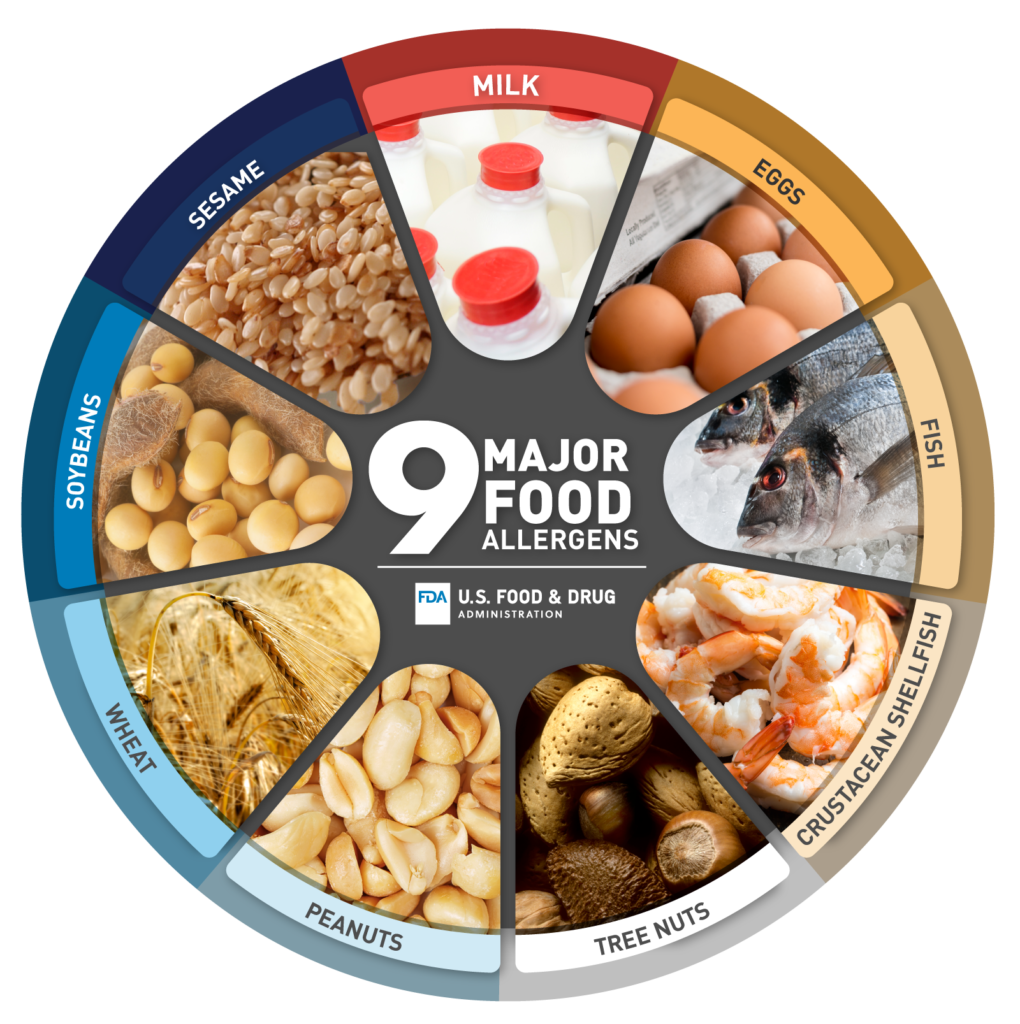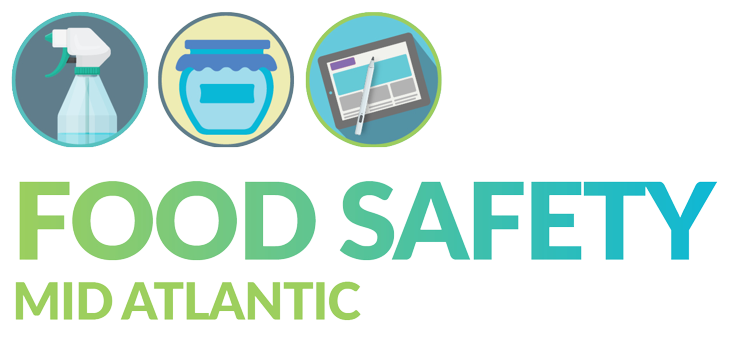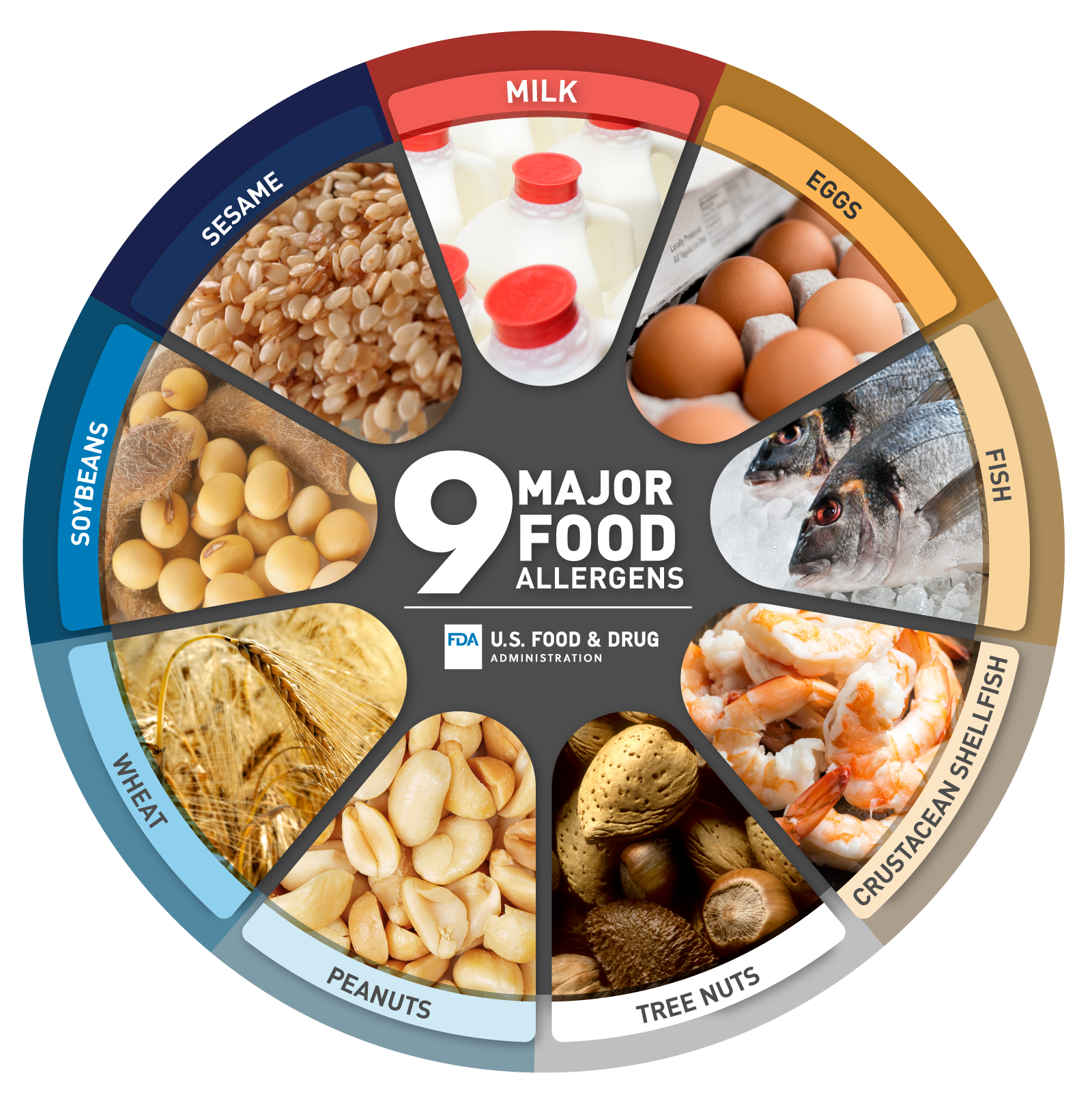
Food allergies are a major factor in the lives of millions of Americans. Allergic reactions range from minor discomfort to full anaphylaxis. There are over 170 foods that have been identified as causing allergic reactions, but the majority of reactions come from the Big Nine: milk, eggs, nuts, fish, crustaceans, shellfish, wheat, soy and sesame.
For many years, there were only eight major allergens identified by the FDA. Sesame was added to the list on January 1, 2023. If any of these nine allergens is in a product, even in trace amounts, it must, by federal law, be identified on the food label.
In this blog post, we’ll cover why it’s important to protect consumers and your business with allergen labeling, the hidden spots where allergens may be found, and the food safety practices you can implement to protect people with allergies.
Why label allergens?
Though allergens are only dangerous to the person sensitive to the allergen, for those people they can be deadly. The only way allergy sufferers can be safe is to avoid their triggers. Clear product labels help allergy sufferers find which foods they can consume safely.
One of the main ways food manufacturers keep people with allergies safe is through allergen labeling. The FDA’s Food Allergen Labeling and Consumer Protection Act (FALCPA) of 2004 established the original eight food allergens with the requirement that they must be identified on food labels.
When food allergens are on a food label, it’s easier for individuals with food allergies and their caregivers to identify which foods are safe to eat. Thus, labeling creates consumer trust and allows people with allergies to live with less fear of accidentally consuming the allergen. However, a third of FDA food recalls are due to allergens not listed on the label.
Labeling allergens is particularly valuable in instances where the allergen is a minor component of an ingredient or may not be expected in the product. For example, milk may be present in chocolate chips. Sesame can be present in granola or crackers. And, you might find eggs in soups or soup mixes.
Creating An Allergen-Aware Food Safety Program
If you produce a product that contains a food allergen, especially one of the Big Nine, it’s imperative that your food safety plans and practices include protocols for managing allergens in your facility and production process.
You need an allergen control program which includes specific Good Manufacturing Practices (GMPs) and Standard Operating Procedures (SOPs) for every step of the production process involving allergens. Make sure to include:
- Storage – Make sure to store allergens, and ingredients containing allergens below other ingredients or in a separate space to prevent cross contamination.
- Ordering – Create a process to regularly check that your ingredients or packaging haven’t changed. Very occasionally suppliers will change how they make something which may lead to problems if you are caught unawares.
- Production – It may be best to create a production schedule that designates a different day of the week to make products with allergens versus ones without in order to prevent cross contact between a food containing an allergen and one without.
- Labeling – Make sure that foods containing allergens always have a label that lists the allergens. If you’ve been making a product with sesame, get new labels that list sesame as an allergen and dispose of the old labels so that you don’t accidentally use them.
- Cleaning and sanitation – Equipment and utensils must be thoroughly cleaned after contact with allergens to prevent cross contact.
- Communication – Make sure your co-workers, sanitation team, pest control contractor, and others commonly in your facility understand your allergen policy.
Allergens frequently get into food through cross contact with equipment, the movement of individuals throughout your facility, and the flow of air in your space. Airborne allergens are a real risk. It may be worthwhile to ban certain allergens from your facility if you are making an allergen-free product.
The risk of mislabeling allergens or having an unlabeled product is two-fold. You could cause harm to a person with an allergy and you could cause harm to your business. Mislabeled or unlabeled foods will need to be recalled and can lead to a loss of consumer trust; both of which could put a small food business out of business.
The best way to support your consumers with food allergies and prevent a costly recall is to have a comprehensive allergen policy. If your allergen policy needs a refresh to account for sesame or you never had one to start with, schedule a free consultation to get the process started.

